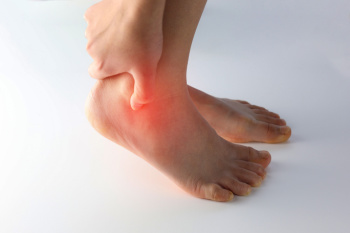
Gout in the ankle can cause sudden, intense pain, swelling, and redness that may be mistaken for a sprain. This type of inflammatory arthritis occurs when uric acid builds up in the bloodstream and forms crystals in the joint. The ankle becomes inflamed, often without prior injury, due to these deposits. Gout is more common in men over 40 and women after menopause. It can be triggered by a diet high in purines, certain medications, excessive alcohol use, or other medical conditions like kidney disease and diabetes. People with recurring gout attacks may develop long-term joint damage or reduced mobility, if the condition is not addressed. A chiropodist can help identify whether gout is affecting your ankle through clinical evaluation and may recommend ongoing treatment to reduce pain and manage uric acid levels. Addressing underlying health issues and modifying diet may reduce flare frequency. If you have ankle pain from gout, it is suggested that you schedule an appointment with a chiropodist for expert advice.
Gout is a painful form of arthritis that can affect anyone. Please consult with one of our chiropodists from West Toronto Foot & Ankle Clinic Inc. . Our chiropodist will assess your condition and provide you with quality foot and ankle treatment.
What Is Gout?
Gout is characterized by sudden, severe attacks of pain, redness, and tenderness in the joints. This type of arthritis is caused by a buildup of uric acid in the bloodstream. When uric acid crystallizes in a joint, often the joint of the big toe, it can bring about a gout attack.
Symptoms
Symptoms of gout include:
- Sudden and severe pain
- Swelling
- Redness
- Warmth
- Joint stiffness
- Joint deformity
Diagnosis
A chiropodist will ask questions about your personal and family medical history, followed by an examination of the affected joint. Laboratory tests and x-rays are sometimes ordered to determine if the inflammation is caused by something other than gout. A sample of fluid taken from your joint can show whether it contains uric acid.
Treatment
Prescription medications or injections are used to treat the pain, swelling, and inflammation. Patients with chronic gout can also use behavioral modifications such as diet, exercise, and decreased intake of alcohol to help minimize the frequency of gout attacks. Foods and beverages that are high in purines should be avoided since purines are converted in the body to uric acid. If left untreated, this painful condition can leave your joint permanently damaged and swollen.
If you have any questions, please feel free to contact our office located in . We offer the newest diagnostic and treatment technologies for all your foot care needs.
